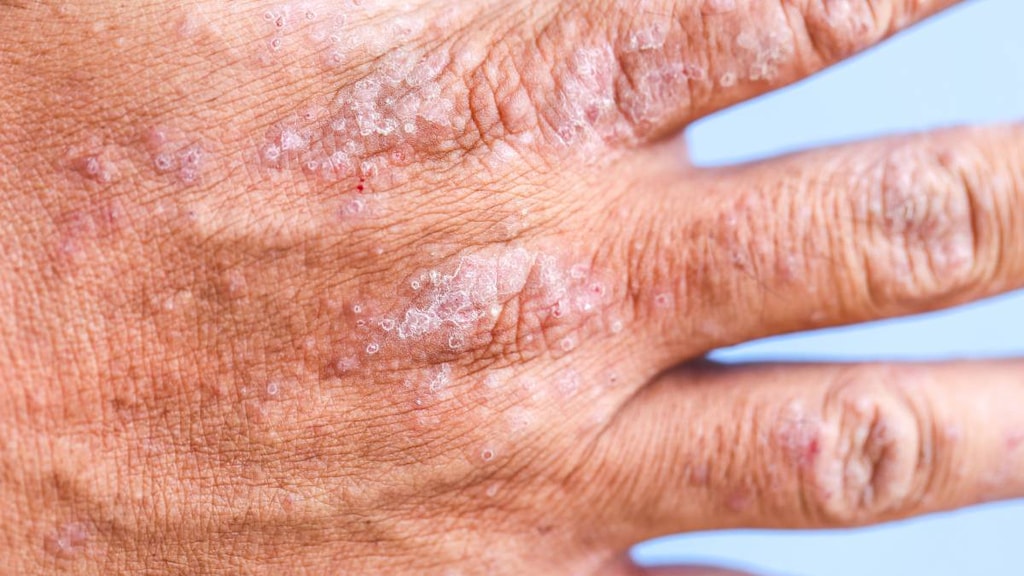Dosage Forms
Excipient information presented when available (limited, particularly for generics); consult specific product labeling.
Ointment, External:
Eucrisa: 2% (60 g, 100 g) [contains edetate calcium disodium, propylene glycol]
Pharmacology
Mechanism of Action
Inhibits phosphodiesterase 4 (PDE-4) and results in increased intracellular cyclic adenosine monophosphate (cAMP) levels.
Pharmacokinetics/Pharmacodynamics
Metabolism
Hepatic to 2 inactive metabolites via hydrolysis and oxidation
Protein Binding
97%
Use: Labeled Indications
Atopic dermatitis: Topical treatment of mild to moderate atopic dermatitis in patients ≥2 years of age
Contraindications
Hypersensitivity to crisaborole or any component of the formulation
Dosage and Administration
Dosing: Adult
Atopic dermatitis: Topical: Apply a thin film to affected area(s) 2 times daily.
Dosing: Geriatric
Refer to adult dosing.
Dosing: Pediatric
Atopic dermatitis: Children ≥2 years and Adolescents: Topical: Apply a thin film to affected area(s) 2 times daily
Administration
For topical use only; not for ophthalmic, oral, or intravaginal use.
Storage
Store at 20°C to 25°C (68°F to 77°F); excursions permitted to 15°C to 30°C (59°F to 86°F).
Drug Interactions
Riociguat: Crisaborole may enhance the hypotensive effect of Riociguat. Management: Riociguat is contraindicated with nonselective phosphodiesterase (PDE) inhibitors and PDE type 5 inhibitors. Other types of PDE inhibitors are not contraindicated, but caution is advised and patients should be monitored for hypotension. Monitor therapy
Adverse Reactions
1% to 10%: Local: Application site pain (4%)
<1%, postmarketing, and/or case reports: Hypersensitivity reaction, urticaria
Warnings/Precautions
Concerns related to adverse effects:
- Hypersensitivity: Hypersensitivity reactions have been reported, including contact urticaria. Severe pruritus, swelling, or erythema (at the application site or at a distant site) may be indicative of hypersensitivity. Discontinue immediately for signs of hypersensitivity.
Monitoring Parameters
Signs of hypersensitivity
Pregnancy
Pregnancy Considerations
Adverse effects were not observed in animal reproduction studies, except with high oral doses which also produced maternal toxicity.
Patient Education
What is this drug used for?
- It is used to treat eczema.
Frequently reported side effects of this drug
- Burning
- Stinging
Other side effects of this drug: Talk with your doctor right away if you have any of these signs of:
- Severe application site irritation
- Signs of a significant reaction like wheezing; chest tightness; fever; itching; bad cough; blue skin color; seizures; or swelling of face, lips, tongue, or throat.
Note: This is not a comprehensive list of all side effects. Talk to your doctor if you have questions.
Consumer Information Use and Disclaimer: This information should not be used to decide whether or not to take this medicine or any other medicine. Only the healthcare provider has the knowledge and training to decide which medicines are right for a specific patient. This information does not endorse any medicine as safe, effective, or approved for treating any patient or health condition. This is only a brief summary of general information about this medicine. It does NOT include all information about the possible uses, directions, warnings, precautions, interactions, adverse effects, or risks that may apply to this medicine. This information is not specific medical advice and does not replace information you receive from the healthcare provider. You must talk with the healthcare provider for complete information about the risks and benefits of using this medicine.
